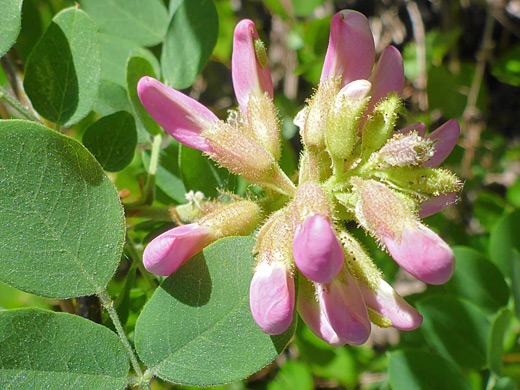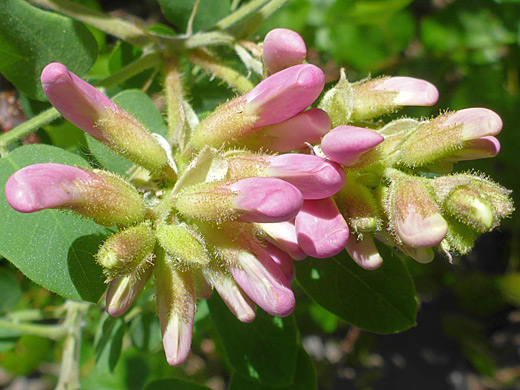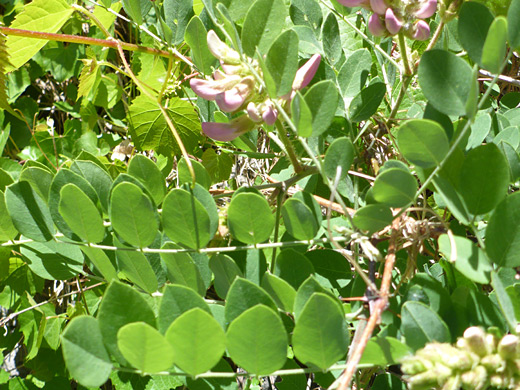Common name:
New mexico locust
Family:
Scientific name:
Robinia neomexicana
Main flower color:
Range:
Most common in Arizona, Colorado and New Mexico; also south California, east Nevada, far west Texas, Utah and Wyoming
Height:
Up to 25 feet
Habitat:
Canyons, hillsides, roadsides, open woodland, from 4,000 to 8,500 feet
Leaves:
Alternate, up to 10 inches long, odd-pinnate; leaflets (15 to 21) are broadly oblong, acute at the tip, up to 1.5 by 1 inches in size
Season:
April to August
Robinia neomexicana, a shrub or small tree, is characterised by thorny branches, odd-pinnate leaves, glandular stems and bright pink flowers. It occurs in a curving band from southern Nevada, across Arizona and up through New Mexico to the western Rocky Mountain foothills in Colorado.
Spines occur in pairs at the base of the leaves; they are around half an inch long, rigid, light brown. Leaflets are bright green, sparsely hairy when young, withering to yellow. Flowers are borne in compact clusters of three to 14; they have pink corollas and pale green or reddish calyces shallowly divided into five triangular lobes. Calyces and stalks have a covering of glandular hairs. Pods are straight, relatively narrow, up to 4 inches long, also glandular hairy, and slightly constricted between the seeds, of which there are typically six.
Spines occur in pairs at the base of the leaves; they are around half an inch long, rigid, light brown. Leaflets are bright green, sparsely hairy when young, withering to yellow. Flowers are borne in compact clusters of three to 14; they have pink corollas and pale green or reddish calyces shallowly divided into five triangular lobes. Calyces and stalks have a covering of glandular hairs. Pods are straight, relatively narrow, up to 4 inches long, also glandular hairy, and slightly constricted between the seeds, of which there are typically six.
All Contents © Copyright The American Southwest | Comments and Questions | Contribute | Site Map




